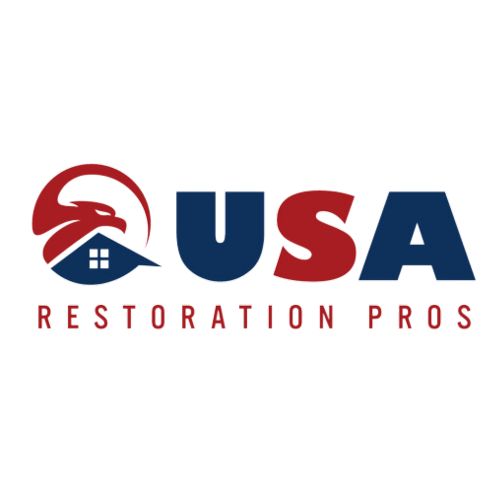Fire is a force of nature that can leave a trail of destruction in its wake, impacting homes, businesses, and lives. The aftermath of a fire is not only emotionally challenging but also necessitates a swift and thorough cleanup to mitigate further damage. In this guide, we’ll delve into the intricacies of fire damage cleanup, providing valuable insights and practical tips for those on the road to recovery.
The devastation wrought by a fire is immeasurable, leaving behind a landscape of charred remnants and lingering despair. fire damage cleanup is not just about restoring a physical space; it’s about rebuilding lives and finding hope amid the ashes. In this comprehensive guide, we’ll walk you through the essential steps involved in the meticulous process of fire damage restoration.
Understanding the Aftermath
Assessing the Extent of Fire Damage
The first crucial step in fire damage cleanup is understanding the scope of the destruction. Professional assessors meticulously examine the affected areas, taking note of structural damage, damage to contents, and other key factors that influence the restoration process.
Identifying Different Types of Damages
Fire damage isn’t a one-size-fits-all scenario. Structural damage may be accompanied by damage to personal belongings and contents. Identifying these different types of damages is integral to formulating a targeted cleanup strategy.
Importance of Professional Assessment and Documentation
Seeking professional assessment and documentation is paramount during the aftermath of a fire. Not only does this serve as a foundation for insurance claims, but it also ensures that no detail is overlooked in the cleanup process.
Safety First: Preparing for Cleanup
Securing the Site and Ensuring Safety Protocols
Before delving into the cleanup, it’s essential to secure the site. This involves barricading unsafe areas and implementing stringent safety protocols to protect both workers and residents from potential hazards.
Importance of Wearing Protective Gear
Personal safety should be a top priority during fire damage cleanup. Wearing protective gear, including masks, gloves, and appropriate clothing, safeguards against the inhalation of harmful particles and minimizes direct contact with contaminants.
Considerations for Working with Professionals
While some may opt for a DIY approach, collaborating with professionals brings an added layer of expertise to the cleanup process. Professional cleanup services have the knowledge and equipment to handle the intricacies of fire damage restoration safely and efficiently.
Initial Steps in Fire Damage Cleanup
Removing Debris and Hazardous Materials
The immediate aftermath of a fire often involves a landscape strewn with debris and hazardous materials. Clearing this debris is a foundational step, creating a safer environment for subsequent cleanup activities.
Salvaging and Securing Valuables
Amid the chaos, it’s crucial to identify and salvage any valuables that may have survived the flames. This includes documents, jewelry, and sentimental items. Securing these valuables prevents further damage during the cleanup process.
Boarding Up Windows and Doors to Prevent Further Damage
Structural vulnerabilities left by the fire need immediate attention. Boarding up windows and doors prevents additional damage from the elements, ensuring that the structure remains stable during the cleanup and restoration phases.
Water Damage Management
Addressing Water Damage Caused by Firefighting Efforts
While water is a crucial tool in firefighting, it can also lead to significant secondary damage. Effectively managing water damage involves extracting excess water, drying affected areas, and preventing mold growth in the wake of water infiltration.
Drying and Dehumidifying the Affected Areas
Thoroughly drying the affected areas is essential in preventing mold growth and structural compromise. Dehumidifiers play a crucial role in maintaining optimal moisture levels during the cleanup process.
Preventing Mold Growth in the Aftermath of Water Damage
Mold is a silent threat that can emerge in the aftermath of a fire due to lingering moisture. Implementing preventive measures and swift mold remediation is integral to the long-term success of the cleanup efforts.
Soot and Smoke Residue Removal
Understanding the Health Hazards of Soot and Smoke Residue
Soot and smoke residue pose significant health hazards, necessitating careful and thorough cleanup. Inhalation of these particles can lead to respiratory issues, making their proper removal a priority.
Techniques for Proper Cleaning of Soot-Covered Surfaces
Cleaning soot-covered surfaces requires specialized techniques. Dry cleaning methods, HEPA vacuuming, and appropriate cleaning agents are employed to ensure the complete removal of soot residues.
Importance of Professional Restoration for Thorough Cleanup
While initial cleanup efforts may address visible soot, professional restoration services go a step further. They employ advanced techniques and equipment to ensure that even microscopic soot particles are eliminated, promoting a healthier indoor environment.
Odor Elimination Techniques
Identifying Lingering Odors After a Fire
The distinctive smell of smoke can linger long after the flames are extinguished. Identifying and addressing these lingering odors is crucial for the overall success of the cleanup process.
Use of Specialized Equipment for Odor Removal
Professional cleanup services utilize specialized equipment such as ozone generators and air purifiers to neutralize and eliminate lingering odors. These tools reach into every nook and cranny, ensuring a thorough deodorization process.
DIY Tips for Addressing Minor Odors During the Cleanup Process
For those tackling minor odors themselves, DIY methods such as vinegar solutions, baking soda, and proper ventilation can make a noticeable difference. However, it’s essential to recognize when professional assistance is necessary for more stubborn odors.
Assessing Structural Damage
Conducting a Thorough Inspection of the Building’s Structure
Structural integrity is paramount in the aftermath of a fire. Conducting a detailed inspection of the building’s structure identifies compromised areas that require immediate attention.
Determining the Extent of Structural Damage
Understanding the extent of structural damage informs the overall restoration plan. It guides decisions on whether repair or reconstruction is necessary and the timeline for these crucial activities.
Collaboration with Engineers and Contractors for Reconstruction
Collaborating with structural engineers and contractors streamlines the reconstruction process. Their expertise ensures that the building not only looks restored but also meets safety and building code standards.
Contents Restoration
Evaluating and Restoring Damaged Personal Belongings
Personal belongings, even those seemingly beyond repair, may be salvageable with proper restoration techniques. Professional content restoration services assess, clean, and restore items, providing a ray of hope for those faced with significant losses.
Professional Cleaning Methods for Salvaging Items
Content restoration involves specialized cleaning methods, including ultrasonic cleaning, ozone treatment, and freeze-drying for documents and photographs. These techniques aim to preserve and restore items to pre-fire conditions.
Documentation and Communication During the Contents Restoration Process
Clear communication between the property owner and content restoration professionals is vital. Detailed documentation of damaged items, restoration efforts, and outcomes ensures transparency and aids in insurance claims.
Insurance Claims and Professional Assistance
Navigating the Insurance Claims Process
The aftermath of fire involves not just physical restoration but also navigating the complexities of insurance claims. Understanding the insurance process, documenting damages, and timely communication with insurance providers are crucial steps in securing coverage.
Benefits of Hiring Professional Fire Damage Cleanup Services
While some may be tempted to handle the cleanup independently, the benefits of professional assistance are undeniable. From specialized equipment to years of expertise, professional cleanup services expedite the process and enhance the likelihood of a successful restoration.
Tips for Choosing a Reliable and Experienced Restoration Company
Selecting the right restoration company can make a significant difference in the outcome of the cleanup efforts. Consider factors such as experience, certifications, and client testimonials when choosing a partner for your fire damage restoration journey.
Conclusion
In the aftermath of a fire, the path to recovery is marked by resilience, meticulous planning, and professional assistance. Fire damage cleanup goes beyond surface-level restoration; it’s about rebuilding lives and spaces. By understanding the nuances of the cleanup process, prioritizing safety, and seeking expert guidance, those affected by the fire can embark on a journey of renewal and restoration. As the embers fade, the promise of a brighter tomorrow emerges through the diligent efforts of fire damage cleanup.
Website: https://usarestorationpro.com/





